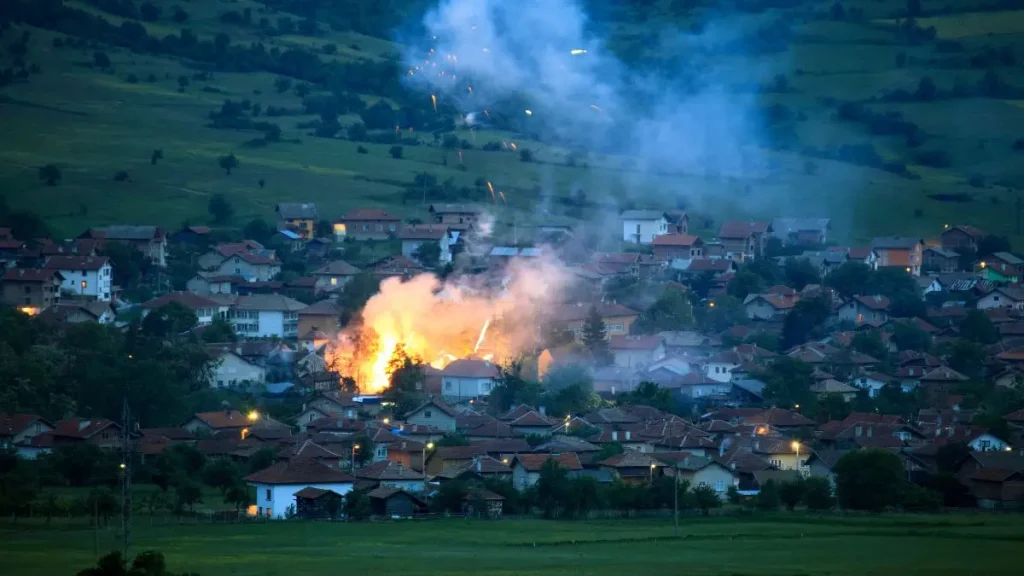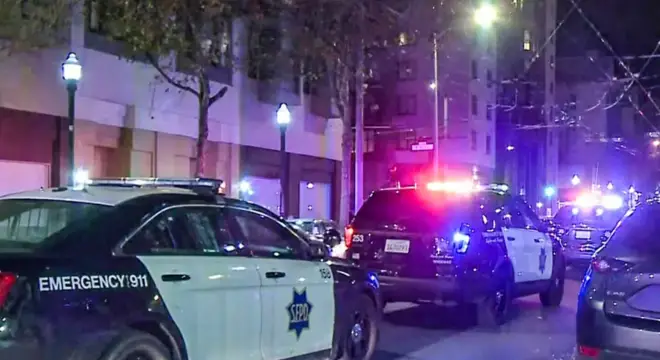House in Markle Completely Engulfed by Fire, Structure Destroyed
I’ve seen my share of house fires over the years, but what happened in Markle, Indiana on Friday was heartbreaking. A quiet street near SR 116 turned into a chaotic scene as flames ripped through a home, leaving behind nothing but a burned-down shell.
No alarms. No early signs. Just smoke, panic, and neighbors scrambling to call for help.
Local viewers were the first to alert —some even called in directly to say multiple fire crews had rushed to the area. And they were right. Huntington County Emergency Management later confirmed the blaze pointing to a location between Logan Street and Lee Street. For a while, roads had to be shut down so firefighters could safely work.
Thankfully, the fire chief said no one was injured. That’s a relief in a situation where seconds often mean lives. But just because no one was physically hurt doesn’t mean the damage wasn’t real. The house was fully destroyed. Imagine losing everything in minutes.
Were you near SR 116 when it happened? Drop a comment if you saw anything or have tips for staying safe in moments like this.
What Really Happened on Friday in Markle?
When I first read about the fire, I couldn’t believe how fast everything unfolded. This wasn’t just a kitchen mishap or a contained blaze. According to WANE 15, the entire structure was engulfed in flames by the time help arrived. Multiple people actually called the news station while the fire was still burning—one even said fire crews from several departments were on the scene trying to get it under control.
The official confirmation came from Huntington County Emergency Management on Facebook. They pinpointed the fire’s location near State Road 116, between Logan Street and Lee Street. That area was shut down temporarily so firefighters could access the home safely.
If you’ve ever lived in a small town like Markle, you know how quickly word spreads—and how deeply something like this shakes a community. One minute you’re going about your day, and the next, you’re rerouting traffic and watching smoke rise from a neighbor’s home.
Crews Act Fast, Roads Closed, But No Injuries Reported
You’ve got to give credit to the emergency crews. They didn’t waste a second. Multiple departments showed up quickly and started doing everything they could to contain the flames. I’ve seen fires where delay costs lives—but this time, the coordination paid off.
The fire chief confirmed that no one was hurt. That’s the kind of news you hope for in any emergency. There’s no overstating how rare that is when a home is lost so completely. It could’ve been so much worse.
The streets near the fire—especially the section of SR 116 between Logan and Lee—were closed off to make room for the trucks and hoses. That kind of response might inconvenience traffic for a bit, but it’s always the right call when a home’s on fire. If you were out driving that day and had to detour, now you know why.
What Caused the Fire? That’s Still Under Investigation

Here’s the part that hits hardest: we still don’t know what started it.
That’s the frustrating reality in many fires. The smoke clears, the structure’s gone, and investigators have to piece things together from charred fragments. It could’ve been anything—faulty wiring, a space heater, a candle left too long. Until they release the report, all we can do is speculate.
But here’s the thing—you don’t have to wait for answers to start thinking about your own home. How safe is your wiring? Do you leave devices plugged in overnight? A fire like this is a loud reminder that prevention often starts with uncomfortable questions.
By the way, if you like staying in the loop about real incidents like this—fire alerts, home safety breakdowns, and local emergency updates—you’ll find some useful firsthand reports shared regularly in this WhatsApp update space. It’s a quick way to stay informed without digging through the noise.
What You Can Learn from This — Even If You Weren’t There
Let’s be honest: most of us see news like this, feel bad, and move on. But if you take even one step to fire-proof your home after reading this, that’s a win.
Here’s what I’d suggest:
- Check your smoke alarms. Don’t just assume they work.
- Make sure you have a fire extinguisher nearby—especially in the kitchen.
- If you have pets or elderly family members, review your emergency plan. Do you know how you’d get them out in under 60 seconds?
This Markle fire may have spared lives, but not property. And sometimes, property holds your whole story—photos, memories, keepsakes. Don’t wait for a tragedy to wake you up.
What This Fire Reminds Us About Rural Home Safety?
I’ve covered enough rural fires to know they follow a pattern—longer response times, older structures, and limited hydrant access. That’s what makes the Markle fire even more concerning. The home was in a zone where fire spreads fast and help, even when fast, still has a race on its hands.
If you live in a small town or on the edge of one, ask yourself:
- Is your home clearly numbered and visible from the street?
- Do emergency crews know how to access your road in the dark?
- Are there dry trees, brush, or old sheds too close to your walls?
The fire in Markle may have spared lives, but it sent a message: location matters. And in places like Wells County, where winters are dry and fire can move with the wind, your prep work needs to be a step ahead.
You don’t need a fancy system. You need readiness.
A similar case recently unfolded in New York where an early morning fire destroyed a home completely, and the cause was only uncovered days later—reminding us how unpredictable these events can be.
House Fires in Wells County: Is There a Pattern?

Let’s zoom out for a second. Markle isn’t the only place in Wells County where a home has gone up in flames recently.
Just a few months ago, another fire made headlines—a space heater was blamed that time. And a little further out, in nearby rural Indiana towns, cooking mishaps and electrical failures have taken homes, pets, and sometimes lives.
Now, no one’s saying Markle is cursed. But if you’re seeing a trend, you’re not imagining it. House fires are more common in winter, especially in areas with older homes and independent heating systems.
Maybe it’s time someone mapped out these incidents. Maybe this is your cue to look around your own home and think: Could it happen here?
Quick action by fire crews also helped prevent casualties in a Cedar Park home fire recently, where no one was hurt despite the intense flames.
If You Live in a Fire-Prone Area, Here’s What You Can Do Today
This isn’t just about Markle. It’s about anyone living in a town where help is a few miles—and minutes—away.
Here’s a short checklist you can act on today:
- Walk around your home with a critical eye. Is anything flammable too close to heat sources?
- Create a 2-minute fire escape plan for your family. Rehearse it once a season.
- Back up your important documents digitally—even if it’s just in your email drafts.
- Add your local fire department’s Facebook page to your favorites. That’s where real-time info lives.
You don’t need to panic. You just need to prepare.
And it’s not just confined to Wells County—a Springfield house fire recently spread into nearby brush and trees, showing how rural fires often grow beyond the structure itself.
Final Thoughts
The Markle house fire didn’t take any lives, and that’s something to be thankful for. But when an entire home burns down in minutes, it’s more than just a news story—it’s a warning.
If you live in a small town, this hits closer than you think. Fires don’t wait for help to arrive. So let this be a reminder: check your alarms, have a plan, and stay alert. Because sometimes, what you do in those first few minutes can change everything.
Want more real stories and tips around fire safety, prevention, and home emergencies? Explore our full collection of home fire incidents here.
Disclaimer: Details in this article are based on currently available local reports and eyewitness updates. Information may evolve as investigations continue. Always refer to official sources for real-time updates and guidance.


